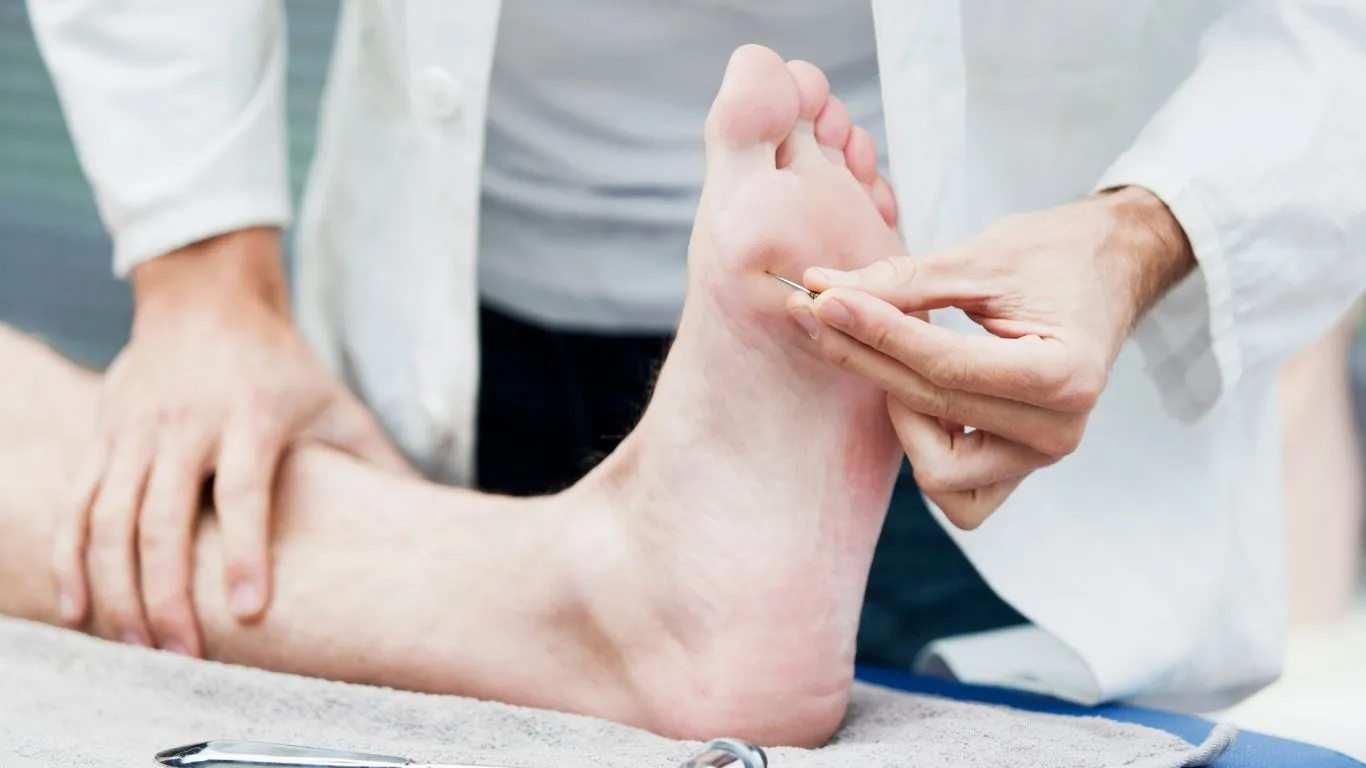
26 Aug Diabetic foot examination
Diabetic foot is a health complication that diabetic patients may suffer from, characterized by a range of health issues that can affect the foot. To prevent health complications and address any development of diabetic foot disorders, you should not neglect early detection of foot problems. Seeking appropriate treatment promptly will help manage and mitigate potential issues.
Dr. Amir Malkawi, a vascular surgery consultant, explains the methods of diabetic foot examination for diabetic patients before the development of health complications in the following article.
Diabetic foot examination method at home
Diabetic patients should examine their feet daily to detect any potential health issues early and to start treatment promptly if they notice any abnormal signs.. The following clarifies the method of diabetic foot examination at home:
- Sit comfortably on a suitable chair.
- Raise one leg over the other so that the person can see the bottom of the foot.
- Thoroughly examine all parts of the foot and the sole.
- Examine the area between the toes.
- Seek assistance from a family member or use a mirror if unable to lift the foot to properly view the bottom of the foot due to health reasons.
There are five essential signs and functions of the foot that must be evaluated during the self-examination of diabetic foot, as outlined below:
Appearance
The overall appearance of the foot is the first sign to observe during the examination, such as no change in the shape of the foot, skin color, or presence of any of the following:
- Recent skin ulcers.
- Recent hair loss on the foot.
- Appearance of bumps or masses on the foot.
- Fragile toenails or increased susceptibility to fractures.
- Ingrown toenail.
Function of the foot
To assess foot functions and flexibility, you can attempt to pick up an object from the ground using only your foot. Additionally, standing on the edge of a solid object and bending the heel downward can indicate foot weakness or issues if pain is felt.
Read more: Cost of Varicose Vein Treatment
Blood circulation to the foot
One method to examine blood circulation to the foot is by pressing on the big toe nail for several seconds, causing a change in its color. After releasing the pressure, monitor how quickly the color returns to normal. If it returns within 5 seconds, it indicates good blood circulation to the foot. If it takes longer, it may indicate poor blood circulation to the foot.
Sensation
You can use a solid object like a pen to run it across the entire foot. If sensation feels different or weak in any part of the foot, it may indicate a problem in that area.
Pain
This can be assessed by performing certain movements that cause pain in the foot, observing the impact and the extent of pain caused, such as when pressure is applied to a specific part of the foot.
Diabetic Foot Examination by the Doctor
Diabetic patients should undergo regular foot examinations, at least once a year, or if any abnormal signs appear on the foot. The purpose of this examination is to diagnose foot problems and prescribe appropriate treatment to prevent health complications. The steps involved in a diabetic foot examination by the doctor may include the following:
- Asking about the medical history of the patient.
- Evaluating the medications being used by the patient.
- Examining the footwear and its suitability for the foot.
- Inquiring about diabetes control.
- Conducting a clinical examination of the foot, including asking about tingling or pain when touching specific areas of the foot, checking for signs of infection, and assessing foot temperature.
- Taking a skin sample for microscopic examination or laboratory testing if a health issue is suspected.
- Performing imaging tests of the foot structure if a problem is detected.
- Conducting various tests to ensure the nerves in the foot are functioning properly and responding to stimulation.
- Evaluating blood circulation to the foot.
Symptoms in the Foot Requiring Medical Attention
There are several symptoms and signs that, if noticed during a foot examination, require immediate medical attention. These include:
- Changes in the shape of the foot.
- Tingling or numbness in the legs or feet.
- Pain in the feet, legs, or thighs.
- Thickening and yellowing of the toenails.
- Burning sensation in the foot.
- Hair loss or thinning on the lower legs and feet.
- Sores and ulcers on the foot.
- Ingrown toenails.
- Changes in the color or temperature of the foot.
- Dryness and cracking of the skin on the foot.
- Loss of sensation in parts of the foot or decreased sensitivity to cold or heat.
References:
[1] – https://www.verywellhealth.com/diabetic-feet-5216003
[2] – https://www.footdoc.org/library/diabetic-foot-care-self-exam.cfm
[3] – https://www.medctrbarbour.org/post/tips-for-performing-a-foot-self-examination
[4] – https://www.cdc.gov/diabetes/library/features/healthy-feet.html
